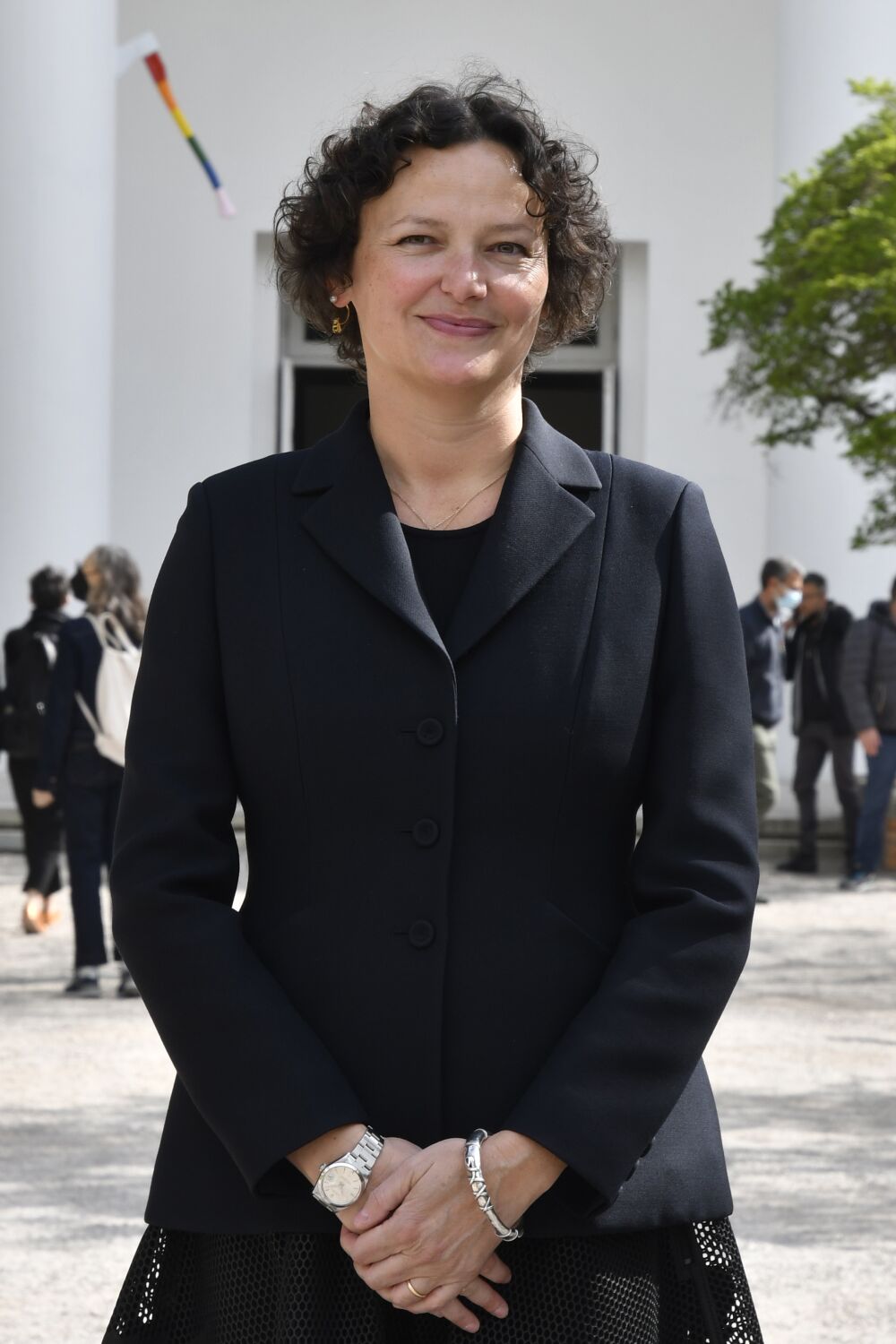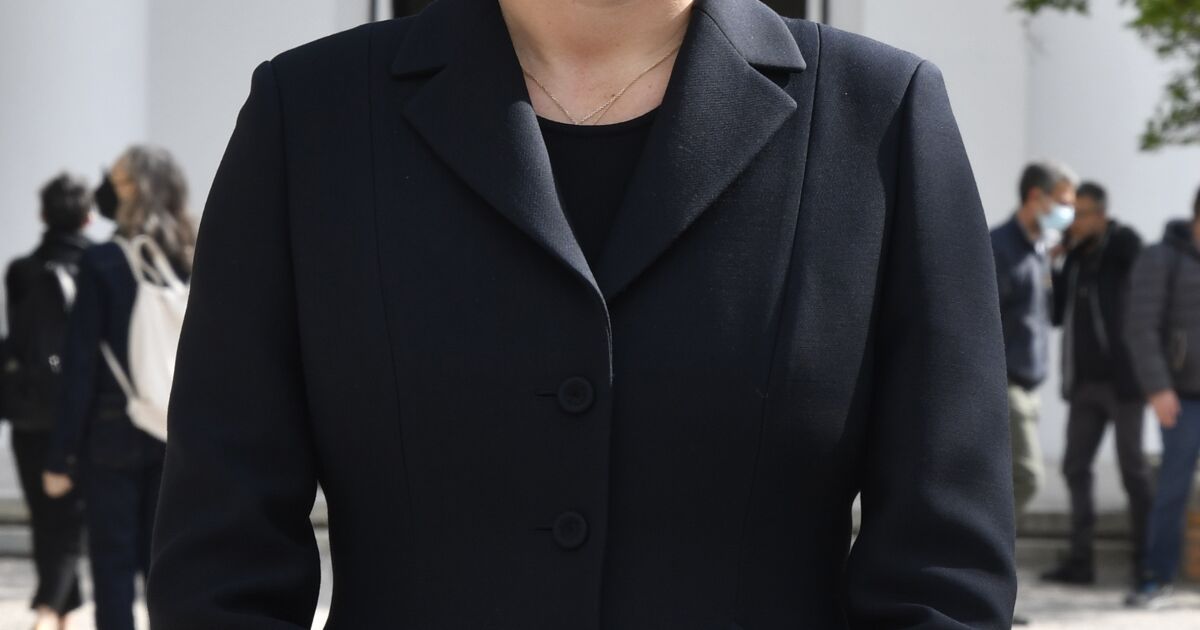
For anyone with more than a casual connection to contemporary art as an international conversation, the Venice Biennale is Mecca. Since 1895, the doors of an ever-expanding number of national pavilions at the Giardini and the Arsenale, and throughout the city, have opened onto the work of living artists that each country selects as its intellectual avatar in each active year.
At center stage is the exhibition that the Biennale itself mounts to showcase critical themes that the anointed curator determines to be the most compelling and worthy of the countless pilgrimages to Venice. This year, New York-based, Italian-raised Cecilia Alemani brought together works by 213 artists from 58 countries for the Biennale’s 59th edition, on view through Nov. 27.
Alemani who has been director and chief of the public art program at the High Line in New York since 2011, devoted three years (an extra one added by the pandemic) in pursuit of the immersive prism of perspectives that might shed the most light on this daunting moment. Her curatorial agenda for the international art exhibition — aggressively inclusive of voices rarely given such lofty exposure, and with an unprecedented majority of women artists — defied tradition by reaching back into the 20th century to celebrate roots and reveal zeitgeist parallels. A bounty of singular new visions mesh with old, in all media. The Biennale conversation is once more reanimated, and as provocative as ever.
The central Biennale exhibition is, at least in part, meant to be a trend-spotting proposition about what is happening currently in art internationally. Obviously, in the time since the last Biennale in 2019, the main global phenomenon affecting all artists has been the COVID pandemic. How did that impact your curatorial task?
I basically conceived and realized and executed this entire show from my little office in my apartment in New York, which for sure has had an affect on the thinking of the show. When I started working on it, I thought about a show that would be about metamorphosis and transformation. But the fact that the pandemic then exploded in front of our eyes made those reflections extremely concrete and real. So the show evolved and became a bit richer, especially because then I had an extra year to prepare.
Tell us about the original catalyst and concept of the show.
The exhibition is titled “The Milk of Dreams.” It’s a title that comes from a book by Leonora Carrington. It’s a children’s story book for kids, but not really. The stories are funny but also horrifying. And she combines, as she often does in her paintings, these two sides of things. I wanted to take this title as an inspiration for an exhibition that talks about a world where people can change, be transformed and become something or someone else.
The show is articulated around three themes [that] merge into each other. The first is transformation and metamorphosis. You see a lot of figuration. A lot of bodies that are depicted but not in a traditional way, but rather distorted, expanded in a metamorphic phase.
The second is the relation between bodies and technology. It wants to show the sort of schizophrenic relationship that we have with technology. On one side, technology and science can ameliorate and improve our bodies and make us live longer and longer. On the other side [is] the fear of a complete machine takeover. This relationship has been turned upside down during the pandemic, when on one side we realize how fragile and mortal our bodies are, and on the other side the only way we could be together with our family and friends was through the mediation of the screen and the devices we have in our pockets. So technology brought us together but also separated us.
The third theme is the relationship between bodies and individuals and the cosmos, the universe, nature, the surroundings — and how one affects the other.
A lot has been said about how the show deviates from the usual formula of presenting only current art and ventures quite widely and vividly into the past.
I wanted the exhibition to be trans-historical, and that’s why you will encounter five mini-exhibitions that bring together artworks mainly from the 20th century, with some exceptions, and they are arranged in what I call time capsules. They’re like rooms or spaces that the visitor enters and finds him or herself surrounded by completely different exhibition designs — rich in textiles and carpets and vitrines, an experience that you don’t normally see in a biennial. And what those exhibitions bring together are artworks that talk about similar themes that are touched upon by contemporary artists but they show the connections between the past and the present in this exercise of looking back at history, especially history of exclusion, artists that have not been included in the Western canon of art history but were as good as their male colleagues. I also have lots of Indigenous voices that were rarely included because the show wants to challenge the centrality of the Western narrative.
In fact, the primary observation made about your show is that the overwhelming majority of the artists — I’ve heard as many as 90% — are women. Did you set out with this as part of your agenda?
It’s the result of a long process. I did not start by saying, I want to do 90% or whatever women artists. As a curator I’ve often worked with artists who are women. I think some of the most interesting artists working today are women. I’m very conscious this exhibition happens in Italy and not in New York City; we’re still quite behind here when it comes to gender equality. And especially representation, you still see lots of museums and galleries that just do shows of male artists. While I don’t really care so much about numbers and quotas, I think I had the opportunity to send a strong message that you can do a good show with a majority of women while the 125 years of the past history of the Biennale have been driven mainly by male artists. I think it’s a reflection of the world and the society we live in now.
Can you talk about the re-emergence of Surrealism as a recurrent strand in this moment and in your exhibition?
Surrealism is certainly in the air. There [was] an amazing show at the Guggenheim in Venice. [“Surrealism and Magic” is currently at the Museum Barberini in Potsdam, Germany.] I think it’s the result of many years of really thorough academic research, such as in exhibitions like “Fantastic Women” [organized by the Schirn Kunsthalle, Frankfurt, in cooperation with Louisiana Museum of Modern Art, Humlebæk, Denmark] which told the story of the women of Surrealism. Or “Surrealism Beyond Borders” [at the Met in New York], which looked at Surrealism not just as a Continental French business but also looked at North Africa. So I think there’s an effort in the last few years of revisiting what Surrealism is and not just thinking about Max Ernst, Dalí, Miró, Magritte … but also including different voices and different geographies.
One could say that maybe we’re living in a similar time to the one in which Surrealism came about, because Surrealism was founded in 1924 in Paris in the ashes of the first World War in between two wars in a very conservative kind of right-wing global atmosphere and political situation. And if we think about right now, not just about the war in Ukraine but in the last six years across the globe, maybe artists are using similar methodologies to talk and to kind of internalize trauma.
Probably the two most compelling issues of this era have been race and gender, with many battles being waged politically and personally. How has this been reflected in your show?
The show talks about metamorphosis and transformation, which are themes that are very broad and have been with us for hundreds if not thousands of years. But of course they can be applied to reflections on race and identity. I think many artists in the show talk about these issues. Just to name maybe the most evident one, Simone Leigh [who also is this year’s honored artist in the U.S. Pavilion] is the opening sculpture at the Arsenale with a very powerful piece called “Brick House,” which basically celebrates Black beauty in the image of a very strong and powerful Black woman who is towering above everyone. And issues of gender are present throughout, including in the historical capsules, especially in the capsules about the cyborg — the idea where we’re really imagining a world beyond gender, trying to overcome this dualism between feminine and masculine, male and female, so imagining these hybrid creatures that go beyond that.
For all the latest Entertainment News Click Here
For the latest news and updates, follow us on Google News.

